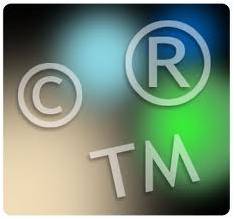 There are different ways of protecting your IP in different countries. This guide is primarily for the European Union, Associated members and the UK. If you want to register in Asia, Latin America, or Africa, you should seek advice either with us or your legal advisor.
There are different ways of protecting your IP in different countries. This guide is primarily for the European Union, Associated members and the UK. If you want to register in Asia, Latin America, or Africa, you should seek advice either with us or your legal advisor.
Intellectual Property (IP) theft is surprisingly common. If you have not taken steps to protect your logo, designs, trade marks, or copyrighted material, there may be nothing you can do to prevent others using it.
Find out how to keep your IP safe:
1 List all your IP Assets
Ensure that you have a procedure in place to assess and account for your IP, from trade marks, copyrights, and designs, to patents and domain names. Use the free IP Health check tool on the Intellectual Property Office (IPO) website to compile a list.
2 Check that your Idea is Original
Use patent and trade mark searches early in the development of new products, logos, and processes to establish whether someone else has got there first and protected them.
3 Record the Evidence of IP Development
Keep a log of evidence that records the development of your IP. For example, file dated and signed copies of drawings and drafts.
4 Prevent IP Theft through Contracts
Ensure all your employment and consultancy contracts clearly state your ownership of any IP developed by your firm.
5 Seek Advice if you are Unsure you are Protected
To ensure that any trade mark you create is properly protected, contact a trade mark agent for advice through the Institute of Trade Mark Attorneys. Find a patent agent through the Chartered Institute of Patent Attorneys.
6 Protect your IP early as Registration Takes Time
It can take up to 18 months to get a UK patent granted. However, under a new IPO scheme you can have your UK patent fast-tracked if you already have international approval – reducing the waiting time to two months. Bear in mind it typically takes about six months to register a trade mark.
7 Guard against Online Infringement
IP infringement has become easier with the growth of internet use and social networking. It happens more than you think — you post a blog or image online and someone else nabs it and passes it off as their own. Copyright and ownership notices will do a lot to put them off, and make it easier to seek redress. Use search engines to check that no one is using your copy, logo, or images without your permission.
8 Protect your IP Outside the UK
Seek advice on whether you need to protect your IP overseas. Remember you will need separate international patents, design rights and trade marks to protect your IP abroad.
9 Keep an Eye out for Scams
The IPO has warned that applicants and owners of UK trademarks and patents have received bogus letters from scammers demanding payment in return for registering their details. To avoid falling prey to fraudsters, only deal with official bodies such as the IPO or the European Patent Office when making applications.
10 Legal Action
Be prepared to take legal action. Weigh up whether taking legal action will be worth the expense, but be prepared to pursue offenders for infringement where necessary — sometimes one stiff letter gets results.



